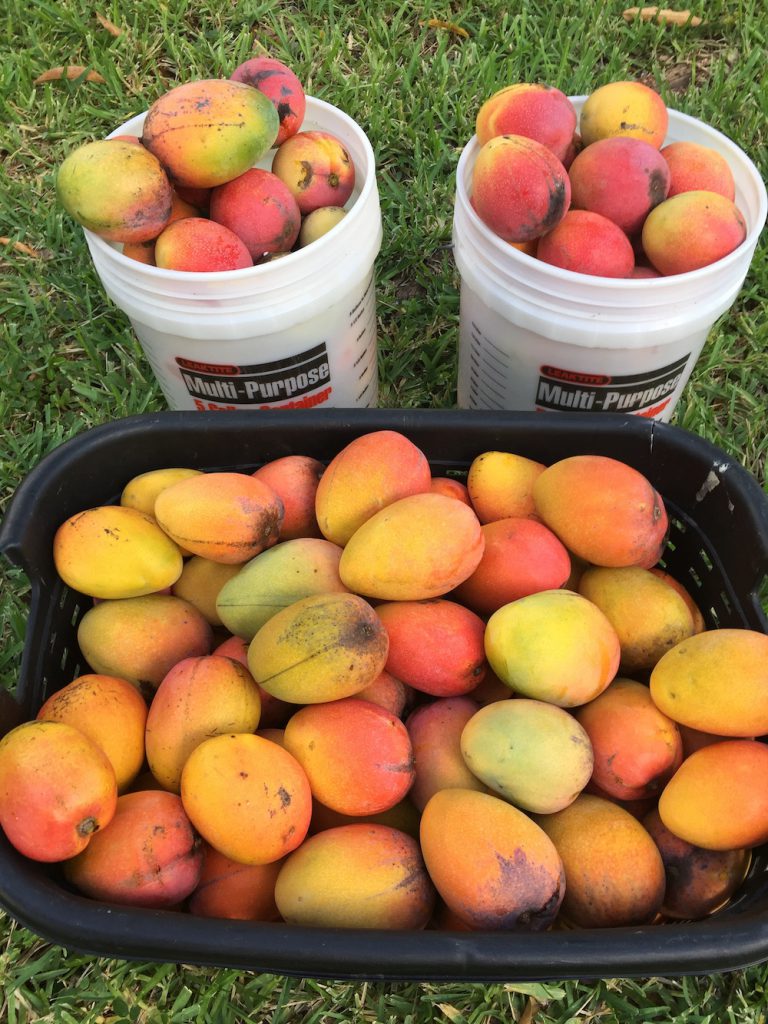As the Commercial Tropical Fruit Agent for Miami-Dade County, my job is to help educate and assist all commercial tropical fruit growers in South Florida in any way I can. Like the parent of multiple offspring who cannot put one child above the rest, it would be wrong for me to pick a “favorite” fruit. My daughter is a single child, so there is no danger of me playing favorites at home, but when it comes to tropical fruit, the choices are endless, and I will never be able to choose a true favorite.
I love the avocado and its extended season, and I thoroughly enjoy mameys, sapodillas, carambolas, lychees, longans, jackfruit, passion fruit and dragon fruit in all of their wonderful shapes, flavors, colors and varieties. But if I had to pick just one fruit for my backyard, if I was forced to make the seemingly impossible and improbable choice of picking a single fruit tree, there’s a solid chance it would be the mighty mango.

Why the mango you might ask? The answer is layered and complex and begins with the origin of this fantastic fruit. The mango, Mangifera indica, has traveled to warmer regions across the globe by land, sea and air, but it began its journey in the monsoon climate of the country of India. The heavy rains and subsequent dry season of India match the South Florida rainy and dry seasons, so the mango is very well adapted to grow here without supplemental irrigation. Once a tree is established, watering a mango tree is rarely needed. In fact, too much water can cause mangos to have problems such as poor roots and minor element deficiencies.
The start of the South Florida dry season typically begins in November and helps to slow down the mango tree’s growth and which allows it to prepare to bloom. Although mangos are considered “tropical”, the plant flowers and fruits best when exposed to a slight temperature drop during the dry season. Unlike the lychee that needs a period of extend low temperatures to flower and fruit well, just a miniscule cold front in December, January or February will initiate bloom on the magnificent mango. Mango trees grown in the true tropics flower and fruit sporadically throughout the year because their blooms are not synched by occasional cold fronts.
Mangos grown in South Florida do not have a major pest or pathogen that make them difficult to grow. The fungus anthracnose can be a problem during flowering and fruiting, but by choosing cultivars well adapted to our humidity and climate, spraying fungicides to protect your fruit is usually unnecessary. The ‘Julie’ and ‘Ataulfo’ mangos are wonderful and delicious fruit in their home countries of Jamaica and Mexico respectively, but our high humidity makes it almost impossible to produce clean fruit of these varieties in South Florida. Choices like ‘Fairchild’, ‘Rosigold’, ‘Nam Doc Mai’, ‘Mallika’, ‘Glenn’ and ‘Carrie’ are much better suited for South Florida. Each of these cultivars is completely fiber free, is of superior flavor, fruits early in the season (May or June) so they miss the humid heart of the rainy season, and can be maintained at 12 feet by 12 feet with annual, selective pruning. It is important to note that without pruning, mangos can reach heights of 50 feet or more.
A moderate sized tree that is well adapted to our climate, fruits well, and has no major pests has all the makings of an excellent choice for South Florida. Combine those factors with the fact that there are very few flavors in the world that compare to a locally grown mango, and you have a true champion.
There are mangos being grown in South Florida by local growers and that come in to season from May until September, so be prepared get to your local fruit stand or farmers market and sample as many cultivars as your budget will allow. I promise you, you will not be disappointed.
Information on young mango tree care
Information on pruning young fruit trees
Mango Growing in the Florida Home Landscape EDIS
 0
0
